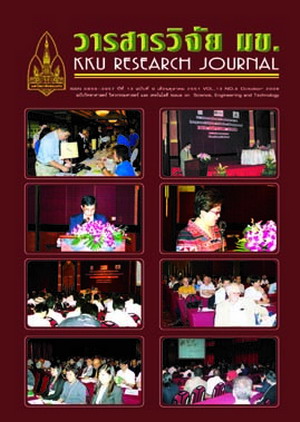Prediction of PM10 concentration 24h in advance using neural networks in Bangkok, Thailand.
Main Article Content
Abstract
Artificial neural network (ANN) technique, whose performances in coping with pattern recognition problems is well-known, were proposed to predict of PM10 concentration 24 hours in advance and to compare with traditional multiple regression (MR) technique. The average daily air pollution and meteorological data during 2000-2004 in four different areas in Bangkok were utilized. For ANN model generation, the multilayer feed forward approach (MLFF) and the error-back propagation algorithm (BP) with sigmoid function were used with the selected predictor variables. For MR model generation, the stepwise and the backward selection techniques were employed for selecting appropriate variables into the models. The best models from the 2 approaches were evaluated for their predicting ability using a new set of data from the year 2005 - 2006. The ANN models developed had the R2 values in the range of 0.538 - 0.758 and could predict with high accuracy of R value between 0.908 and 0.919. They were effective in predicting the trends in the PM10 data set, but not the peak values. Overall, the performance of the neural network models was better than that of the regression models with the same inputs. The predicting ability of models from both approaches rely on variables such as PM10, NO2 , temperature, and relative humidity.
Article Details
How to Cite
Pansripong, S., Karuchit, S., & Kongjan, T. (2017). Prediction of PM10 concentration 24h in advance using neural networks in Bangkok, Thailand. Asia-Pacific Journal of Science and Technology, 13(9), 1049–1057. retrieved from https://so01.tci-thaijo.org/index.php/APST/article/view/83530
Section
Research Articles


